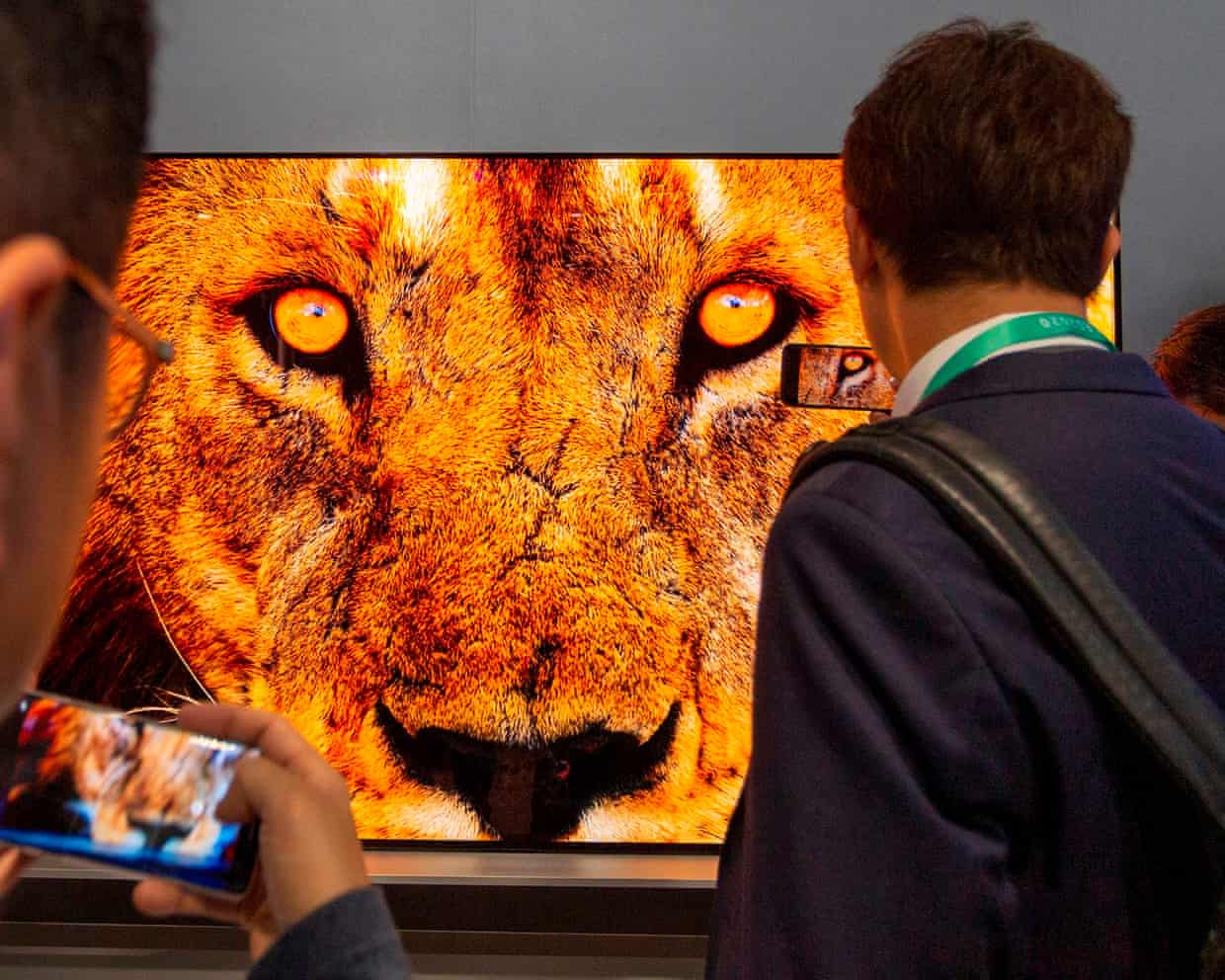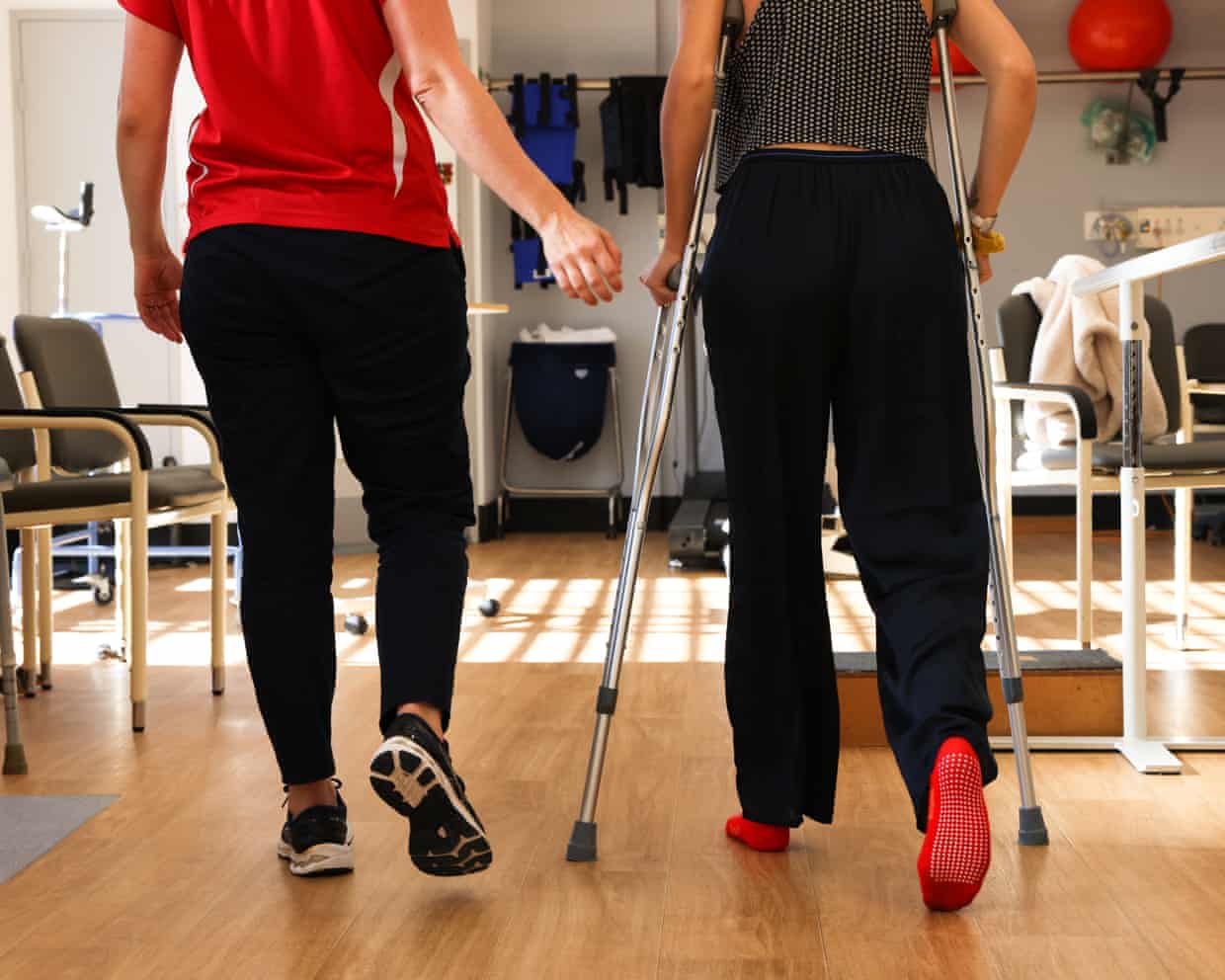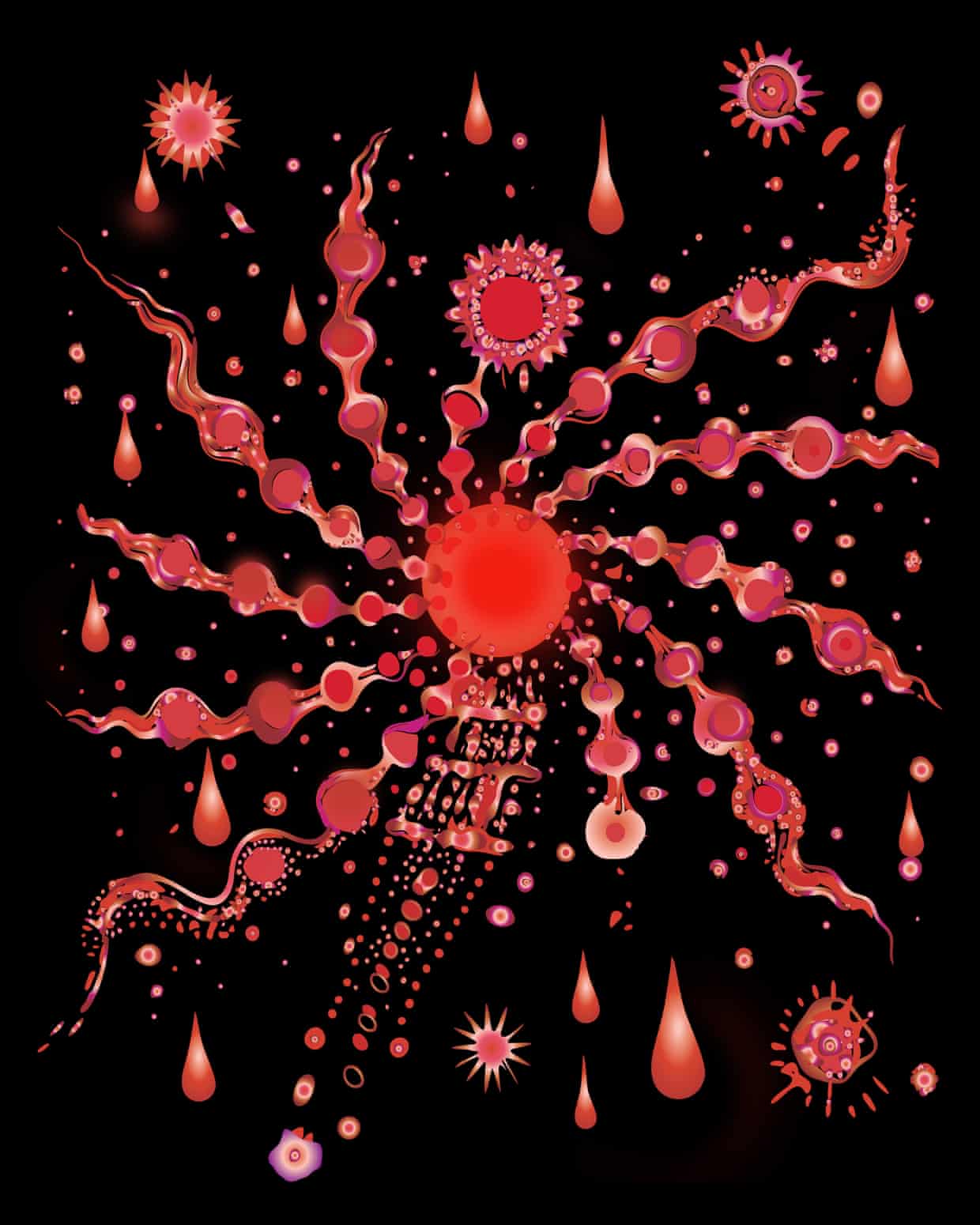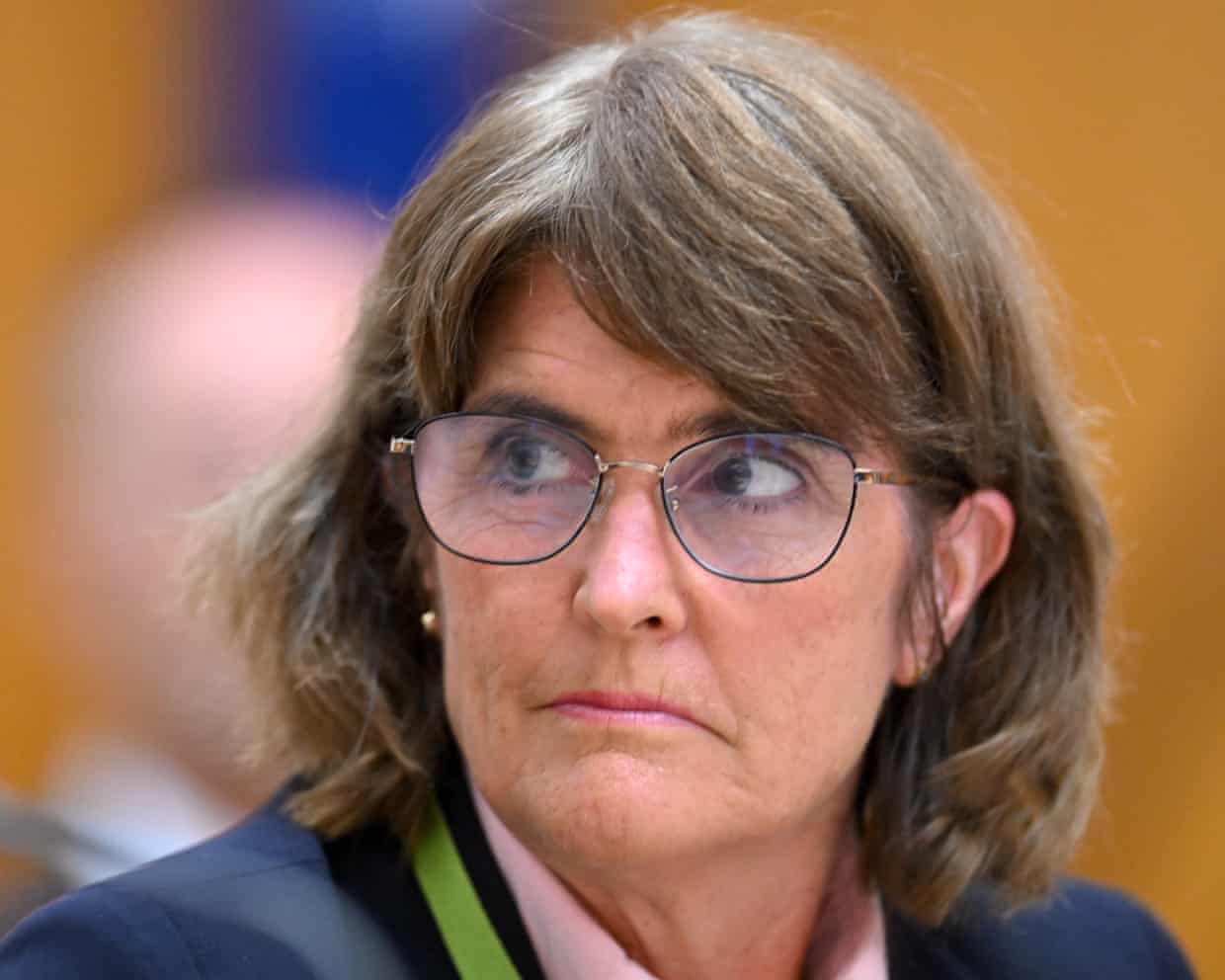Ultra-HD televisions not noticeably better for typical viewer, scientists say

Many modern living rooms are now dominated by a huge television, but researchers say there might be little point in plumping for an ultra-high-definition model.Scientists at the University of Cambridge and Meta, the company that owns Facebook, have found that for an average-sized living room a 4K or 8K screen offers no noticeable benefit over a similarly sized 2K screen of the sort often used in computer monitors and laptops.In other words, there is no tangible difference when it comes to how sharp an image appears to our eyes.“At a certain viewing distance, it doesn’t matter how many pixels you add.It’s just, I suppose, wasteful because your eye can’t really detect it,” said Dr Maliha Ashraf, the first author of the study from the University of Cambridge.
Ashraf and colleagues, writing in the journal Nature Communications, report how they set about determining the resolution limit of the human eye, noting that while 20/20 vision implies the eye can distinguish 60 pixels per degree (PPD), most people with normal or corrected vision can see better than that.“If you design or judge display resolution based only on 20/20 vision, you’ll underestimate what people can really see,” Ashraf said.“That’s why we directly measured how many pixels people can actually distinguish.”The team used a 27in, 4K monitor mounted on a mobile cage that enabled it to be moved towards or away from the viewer.At each distance, 18 participants with normal vision, or vision corrected to be normal, were shown two types of image in a random order.
One type of image had one-pixel-wide vertical lines in black and white, red and green or yellow and violet, while the other was just a plain grey block,Participants were then asked to indicate which of the two images contained the lines,“When the lines become too fine or the screen resolution too high, the pattern looks no different from a plain grey image,” Ashraf said,“We measured the point where people could just barely tell them apart,That’s what we call the resolution limit.
”The researchers found the human eye can resolve more detail than commonly thought, revealing the average was 94 PPD for greyscale images viewed straight on, while for red and green patterns it was 89 PPD,For yellow and violet patterns it was lower, at 53 PPD,In another experiment, 12 of the participants were presented with white text on a black background and vice versa, again at various distances, and were asked to indicate when the text looked as sharp as a sharp reference version,“The resolution at which people stopped noticing differences in text matched what we saw with the line patterns,” Ashraf said,The researchers have released a chart that shows different screen sizes and viewing distances, along with the nearest standard resolution that reaches or slightly exceeds the visual limit for most people.
“In other words, if your setup falls into one of those squares, you wouldn’t gain any visible benefit from going higher,” Ashraf said.The team have also created a free online calculator that allows users to enter their viewing distance along with the size and resolution of their screen, with the results indicating whether the setup is above or below the resolution limit of the human eye.As a result, users can explore whether a higher-resolution screen with more pixels would make a difference to what they see.“If someone already has a 4K, 44-inch TV and watches it from about 2.5 metres away, that’s already more detail than the eye can see,” Ashraf said.
“Upgrading to an 8K version of the same size wouldn’t look any sharper.”

‘Gross failure’ led to deaths of mother and baby in Prestwich home birth
When Jennifer Cahill went into labour with her second child at home in summer last year, she thought that the delivery, assisted by two midwives and with her husband by her side, would be a relatively simple one. Within 24 hours, however, she was dead, and her newborn daughter was fighting for her life after experiencing “horrors that should be consigned to a Victorian-age nightmare”.Cahill, 34, who was an international export manager, died after her baby, Agnes Lily, was born in the early hours of 3 June last year at her home in Prestwich, north of Manchester.She suffered a haemorrhage and lost five pints of blood, or almost half the blood in her body, owing to a tear between her vagina and anus. She was taken to hospital, but went into cardiac arrest in the ambulance, and died from multiple organ failure the next day

Men need twice as much exercise as women to lower heart disease risk, study finds
Men may need to exercise twice as much as women to achieve the same reduction in coronary heart disease risk, according to researchers, who say healthy living guidelines should take account of the sex differences.Scientists analysed physical activity records from more than 80,000 people and found that the risk of heart disease fell 30% in women who clocked up 250 minutes of exercise each week. In contrast, men needed to reach 530 minutes, or nearly nine hours, a week to see the same effect.The study builds on previous work that suggests women benefit more than men from the same amount of exercise, but that women are generally less physically active and less likely to meet recommended exercise targets.Under NHS guidelines, men and women aged 16 to 64 should take at least 150 minutes of moderate exercise, or 75 minutes of vigorous exercise, each week, combined with muscle-strengthening activities at least twice a week

NHS trust pleads guilty after teenage girl absconded from 24-hour care and killed herself
An NHS trust has pleaded guilty to failures over the avoidable death of a teenage girl who killed herself after absconding from 24-hour supervision under its care.Ellame Ford-Dunn, 16, who suffered with severe mental health problems, died on 20 March 2022, minutes after leaving the Bluefin acute children’s ward in Worthing hospital, part of University hospitals Sussex NHS trust (UHSussex).The supervising agency nurse watched Ellame leave the ward, but did not follow her because she said she had been instructed not to leave the ward if a patient absconded, Brighton magistrates court was told.On Monday, the trust pleaded guilty to a failure to provide safe care and treatment resulting in avoidable harm. In mitigation it said the acute ward was not equipped to deal with vulnerable mental health patients, but the trust had accepted Ellame because of a “growing crisis nationally” over the shortage of mental health beds for children and adolescents

Physiotherapy care in decline because of poor NHS facilities, poll shows
Stroke patients and others in need of intense physiotherapy are facing declining care because of inadequate space and equipment in hospitals, a survey shows.The Chartered Society of Physiotherapists found that four in 10 NHS physiotherapy staff have lost or are expected to lose dedicated rehabilitation space.In the survey of more than 2,000 members, six in 10 said their rooms had been taken over by other clinical teams, with some attributing this to a lack of funding or their bosses not prioritising their work.“Five years after the pandemic, it’s shocking that rehabilitation space continues to be sidelined and routinely taken away from physiotherapy teams who are then forced to provide care in corridors,” said Sara Hazzard, the society’s assistant director. “These vital spaces are where people learn to walk again, recover from catastrophic life events such as stroke and rebuild their identity and lives after surgery in a dignified manner

What does mistaken release of Hadush Kebatu say about state of prisons in England and Wales?
Hadush Kebatu was mistakenly released from a 12-month prison sentence for sexually assaulting a teenage girl, despite the fact that his offences had sparked riots across England and Wales this summer. His recapture after a two-day manhunt has left mounting questions about the state of the Prison Service.An Ethiopian asylum seeker who crossed the Channel on a small boat on 29 June, he was housed at the Bell hotel in Epping, Essex, which was being used as accommodation.Eight days after his arrival, Kebatu made sexually explicit remarks to a 14-year-old girl who was eating a pizza with her friend in Epping town centre.The next day, he sexually assaulted a woman, trying to kiss her

‘A medical miracle’: is period blood ‘the most overlooked opportunity’ in women’s health?
Somewhere in the US a woman on her period pulled out her dripping, saturated tampon. But instead of wrapping it in toilet paper and tossing it into a bin, she put the tampon in a special plastic sample container, screwed the lid on tight and mailed it to an address in Oakland, California.The address was that of NextGen Jane (NGJ), a Bay Area-based startup founded in 2014. And now Julia Carr, NGJ’s clinical research coordinator, stands in the company’s lab under a fume hood happily decanting a mixture of the woman’s blood and a preservation solution into a test tube. She will go on to pipette out small amounts to freeze and store for later analysis

CSL share price plummets amid shareholder revolt over executive pay plans

RBA governor dismisses jobs fears but hints at rates hold after inflation uptick

More than a million people every week show suicidal intent when chatting with ChatGPT, OpenAI estimates

Amazon plans to cut 30,000 corporate jobs in response to pandemic overhiring

Socceroos fans divided over new FA+ paid membership offering fast access to World Cup tickets

F1 title run-in: Who will win the drivers’ championship in three-way tussle? | Giles Richards